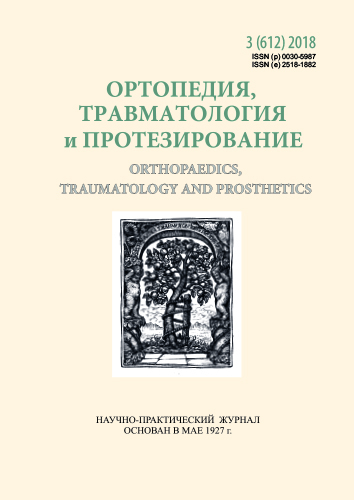New edition of ao/ota fractions classification
DOI:
https://doi.org/10.15674/0030-59872018393-98Keywords:
classification of fractures, bones, AO/OTAAbstract
This article is devoted to the new classification of fractures according to the principles of AO (Arbeitsgemeinschaft Fur Osteosynthesefragen) and ОТА (Orthopedic Trauma Association). Presented short historical information about creation and spreading of classification of the long bones fractures. It is explained what was the authorʼs aim of the last compendium and why changes had happened. It was described the reasons why shaft fractures of type B1 and C1 were deleted from the classification, changes in the proximal shoulder and femoral fractures distribution. There was new approach to the classification of the two bone segments. Nowadays fractures of the forearm are divided separately, but ulnar and radial bones fractures are classified according to standard approach. It was shown the characteristics as for Monteggia та Galeazzi fractures. Similar is approach to crus fractures. There were new parts in the classification with universal modifications and characteristics. Authors gave examples how these new innovations can help to characterize bone muscles system more precisely. Classification of joints luxation with or without fractures was presented. It was presented to which localization we should concern isolated internal malleus or posterior tibia edge with intact (43В) or broken fibula (44). The new remarks as for fractures writing are described (absence of hyphen, appearance of the new signs in round and square brackets. The new approach as for sections with combined bone segments like broken wrist and foot. Names of classifications were included into compendium-2018, like periprosthetic fractures, injuries of spine, breast, ribs, scapula, pelvic ring and sacrum.
References
- Kellam, J. F., Meinberg, E. G., Agel, J., Karam, M. D., & Roberts, C. S. (2018). Introduction. Journal of Orthopaedic Trauma, 32, S1–S10. doi:https://doi.org/10.1097/bot.0000000000001063
- Kellam, J. F. Educational video — AO/OTA fracture and dislocation classification 2018 revisions [web source]. Avalable from: https://classification.aoeducation.org/video.html
- Müller, M. E. (1987). Classification AO des fractures: 1. Berlin: Springer.
- Muller, M. E. (1990). The comprehensive classification of fractures of long bones. Berlin: Springer.
- Martínez-Rondanelli, A., Escobar-González, S. S., Henao-Alzate, A., & Martínez-Cano, J. P. (2017). Reliability of a four-column classification for tibial plateau fractures. International Orthopaedics, 41(9), 1881–1886. doi:https://doi.org/10.1007/s00264-017-3543-x
- Hsu, C., Shih, C., Wang, C., & Huang, K. (2013). Lateral femoral wall thickness. The Bone and Joint Journal, 95-B(8), 1134–1138. doi:https://doi.org/10.1302/0301-620x.95b8.31495
- Martínez-Rondanelli, A., Escobar-González, S. S., Henao-Alzate, A., & Martínez-Cano, J. P. (2017). Reliability of a four-column classification for tibial plateau fractures. International Orthopaedics, 41(9), 1881–1886. doi:https://doi.org/10.1007/s00264-017-3543-x
Downloads
How to Cite
Issue
Section
License
Copyright (c) 2018 Mykola Korzh, Kostiantin Romanenko, Petro Nikitin

This work is licensed under a Creative Commons Attribution 4.0 International License.
The authors retain the right of authorship of their manuscript and pass the journal the right of the first publication of this article, which automatically become available from the date of publication under the terms of Creative Commons Attribution License, which allows others to freely distribute the published manuscript with mandatory linking to authors of the original research and the first publication of this one in this journal.
Authors have the right to enter into a separate supplemental agreement on the additional non-exclusive distribution of manuscript in the form in which it was published by the journal (i.e. to put work in electronic storage of an institution or publish as a part of the book) while maintaining the reference to the first publication of the manuscript in this journal.
The editorial policy of the journal allows authors and encourages manuscript accommodation online (i.e. in storage of an institution or on the personal websites) as before submission of the manuscript to the editorial office, and during its editorial processing because it contributes to productive scientific discussion and positively affects the efficiency and dynamics of the published manuscript citation (see The Effect of Open Access).














